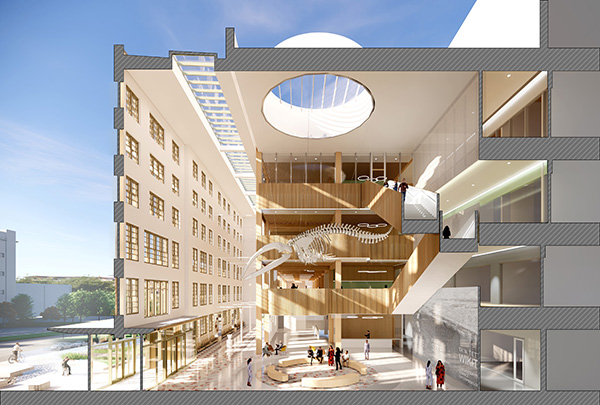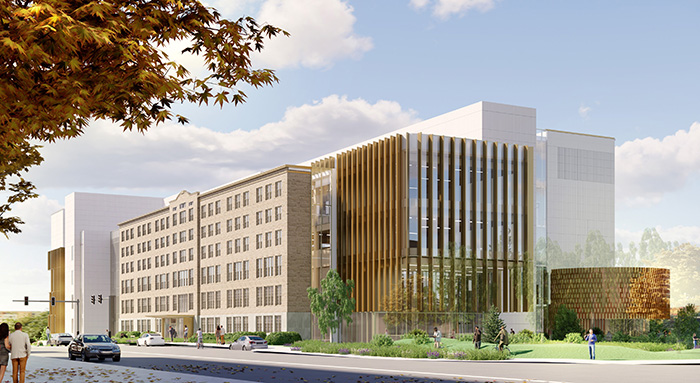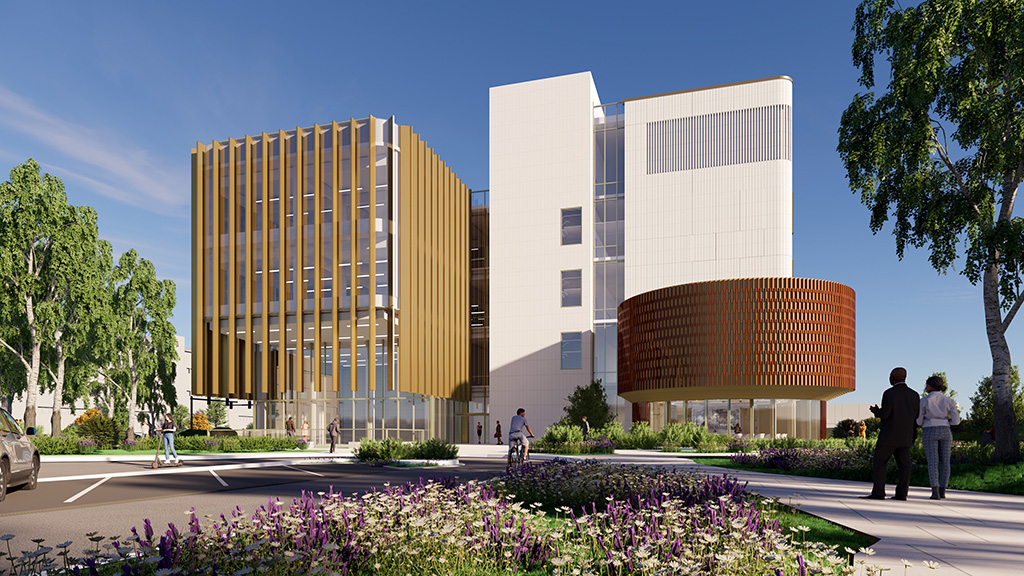Construction is officially making waves at the Atlantic Science Enterprise Centre (ASEC).
Once complete it will provide federal scientists with a state-of-the-art space and equipment to collaborate on research opportunities, understand, protect and sustain Atlantic freshwater and coastal ecosystems in Canada.
A groundbreaking ceremony was held recently in Moncton, N.B. to mark the start of major construction.
The facility was designed by Diamond Schmitt with EXP and “will reflect the heritage of the site, while establishing an open and inclusive environment that makes aquatic science more accessible,” reads a statement.
The Government of Canada is investing in the project through the Laboratories Canada Strategy. The centre is one of the most significant federal investments in Atlantic Canada since the construction of the Confederation Bridge, a release indicates.
Public Services and Procurement Canada awarded a construction management contract to Pomerleau, Inc. and an architecture and engineering services contract to Diamond Schmitt Architects in October 2021.
The conceptual design was presented in November 2022 and the project is currently in the detailed design phase which is expected to be completed in the next few months.
The new ASEC will occupy the former home of the Collège Notre-Dame-d’Acadie, the first institution of higher education for Acadian women, which opened in 1949 and was founded and run by the Sisters of Notre-Dame-du-Sacré-Coeur. The building was purchased by the Government of Canada in 1982 and reopened in 1985 as the Gulf Fisheries Centre.
“The design will interpret the building’s historical pavilion character and strive to commemorate its origins by integrating and adapting key elements and spaces into the site’s now expanded program,” states Diamond Schmitt’s website.
“The prominence of the Collège’s main west heritage façade will be retained and serve as a principal element in Diamond Schmitt’s scheme. It will be centrally positioned and anchor the new facility, with the existing main entrance remaining as the principal entry point.”

Inside there will be a four-storey atrium and skylit galleria that will serve as an exhibition space to commemorate the Sisters, provide a place for science on display, recognize Indigenous communities and serve as a place for gathering. It will also create an architectural transition between the retained heritage façade and the new building.
“The atrium and galleria will act as the connective tissue between the building’s different programming components, while also establishing the importance of the public realm which includes a flexible multipurpose room, Mawiomi — an Indigenous Gathering space, informal and formal meeting spaces of varying sizes,” the website states.
The centre will also be net-zero.
“Science areas will be organized around the creation of neighbourhoods that group similar types of investigation together, encouraging the sharing of resources and equipment,” states the website. “Laboratory space will be well lit with daylight and views, be universally accessible and adapt easily to the daily and future needs of occupants as their research evolves.”
One of the objectives of the ASEC project is to establish new partnerships with First Nations and Indigenous groups through extensive engagement and visioning sessions which informed the design of the building.
The consultation, led by Mi’kmaq Elder Noel Millea, aimed to create a welcoming space that supports the needs of the Indigenous community.

“Indigenous ways of knowing and being will inform the building’s design in a number of ways. Large open spaces, flooded with natural light will offer places of gathering, spaces for learning and collaboration and talking circles. The use of wood and glazing will provide a sense of warmth and belonging and open up the facility towards the outdoors, creating connections with the natural surroundings. Visual representations of Mi’kmaq, Wolastoqiyik and Passamaquoddy culture will be found throughout the new facility and its landscape.”
The goal of the overall planning and design approach is to create a collaborative work environment for over 700 employees from four federal departments: the Department of Fisheries and Oceans headquarters and open partner office areas.
In order to allow for the continued use of the existing building during construction, the centre is being built in three phases.
Site preparation work is currently underway as part of the first phase. Construction of the new science wing to the north of the existing building will begin in 2024.
The final phase, scheduled to begin in 2027, will see scientists moving into the newly built science wing, while the redevelopment of the Gulf Fisheries Centre and construction of the remainder of the centre begins.
This step will include rebuilding the façade to commemorate the history of the original building. The centre is expected to be fully occupied by 2031.
Follow the author on Twitter @DCN_Angela











Recent Comments
comments for this post are closed